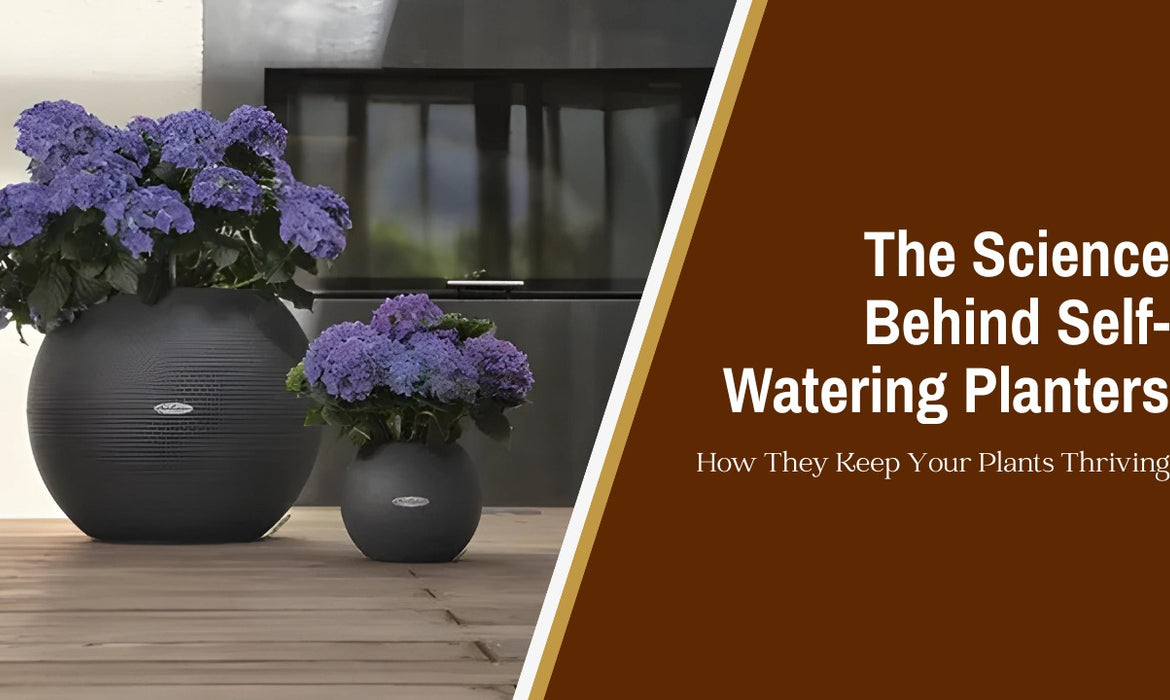The Science Behind Self-Watering Planters: How They Keep Your Plants Thriving
| On 2024-04-15
Self-watering plants are here to eliminate your worries while taking care of your plants. Yes, you can enjoy lush plants without any fears of dreaded root rot. So, keep your plants thriving by skipping the traditional way of watering your plants from top to bottom. It is important to focus on the roots of plants to help them thrive and survive better.
Let us go into the science behind self-watering plants.
The science behind self-watering plants
Let us see how self-watering plants scientifically promote plant growth and health.
1. Reach the roots of the plant
Watering your plants from top to bottom does not allow the roots to come in contact with the water directly. This may lead to drooping or death of plants. To keep your plants nourished, it is important to make sure the water sinks in deep and reaches the roots of the plant allowing them to thrive and grow
2. Absorption of water through osmosis
Plants are known to absorb water through osmosis. The water moves to the plant through the transpiration process. This movement of water occurs through osmosis, gravity, mechanical pressure, and capillary action.
Sub-irrigation process allows the direct supply of water at the plant’s roots. Self-watering plants also work through similar processes allowing the plants to stay hydrated. The bottom-to-top process works on capillary action.
3. Adjustable to automated weather conditions
The self-watering plants have self-adjustment to weather conditions. Thirsty plants require more water on hot and dry days with the help of a reservoir. It helps maintain water in reservoirs during hot and dry weather conditions. Accessing the root of the plant is a must rather than just watering the plants superficially.
4. Avoid root rot
Root rot is mainly caused by fungal pathogens formation in waterlogged soil. This is one of the most common problems for many garden lovers. Self-watering plants are considered the best solutions to deliver fresh water to roots and allow the excess water to evaporate through the soil surface. They help to maintain perfect optimum soil moisture levels. It also prevents the growth of fungus which can harm the plants.
5. Works through wicking action
Self-watering plant helps to minimize water collection at the bottom of the pot. This ensures that the plant receives the right amount of water as needed without soaking the roots excessively. It helps to maintain the intermolecular forces between the water molecules allowing effective absorption of the water into the roots and soils of the plant. This helps in promoting healthier, happier, and more beautiful plants by keeping plant diseases at bay.
The types of self-watering plants
Self-watering plants are mainly of two types which are as follows-
- Reservoir-based plants have an in-built reservoir at the bottom which holds water. The plant sits in a separate pot inside the plantar and helps in wicking the water up from the reservoir. These plants do not have drainage holes and you need to control reservoir water levels accordingly.
- Sub-irrigated planters have a double bottom with a water reservoir below the plant’s root zone. This allows the plant to sit directly below the plantar. It works through capillary action which helps to draw water through the soil. They generally do have optional drainage holes which prevents overflow of water and waterlogged soil.
The advantages of the self-watering plants
- Allows the water to distribute evenly throughout the soil and roots
- Roots have constant access to moisture
- Promotes healthy growth of plants
- Reduces the risk of under or over watering problem
- Good moisture levels boost better aeration
- Helps in better absorption of water and nutrients for healthy plants
- Helps boost a plant’s immune system and makes it more resistant to environmental stressors
- Keeps steady water supply on hand
- Helps promote water efficiency and conservation
- Avoid wastage of water with minimum water usage
